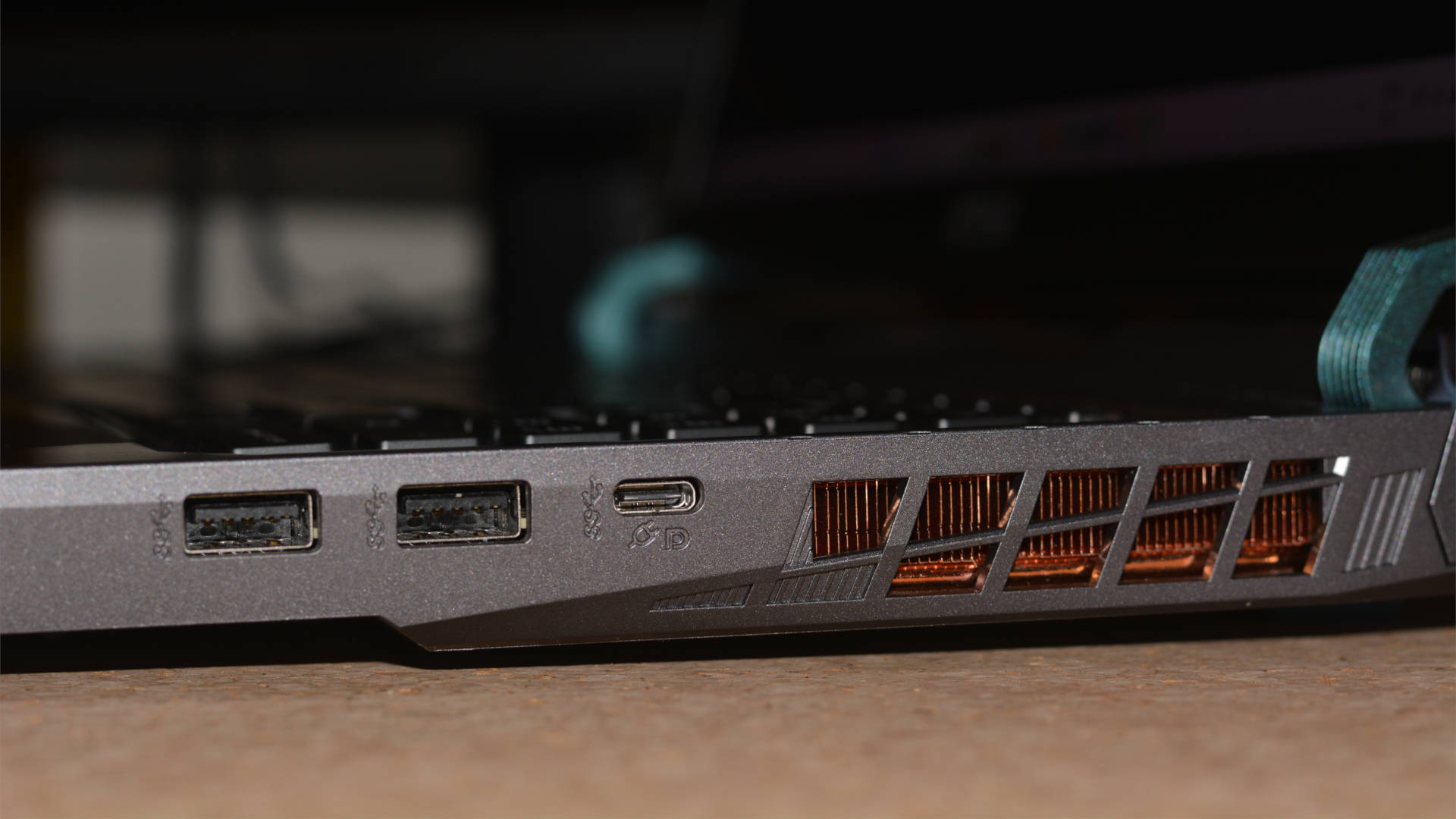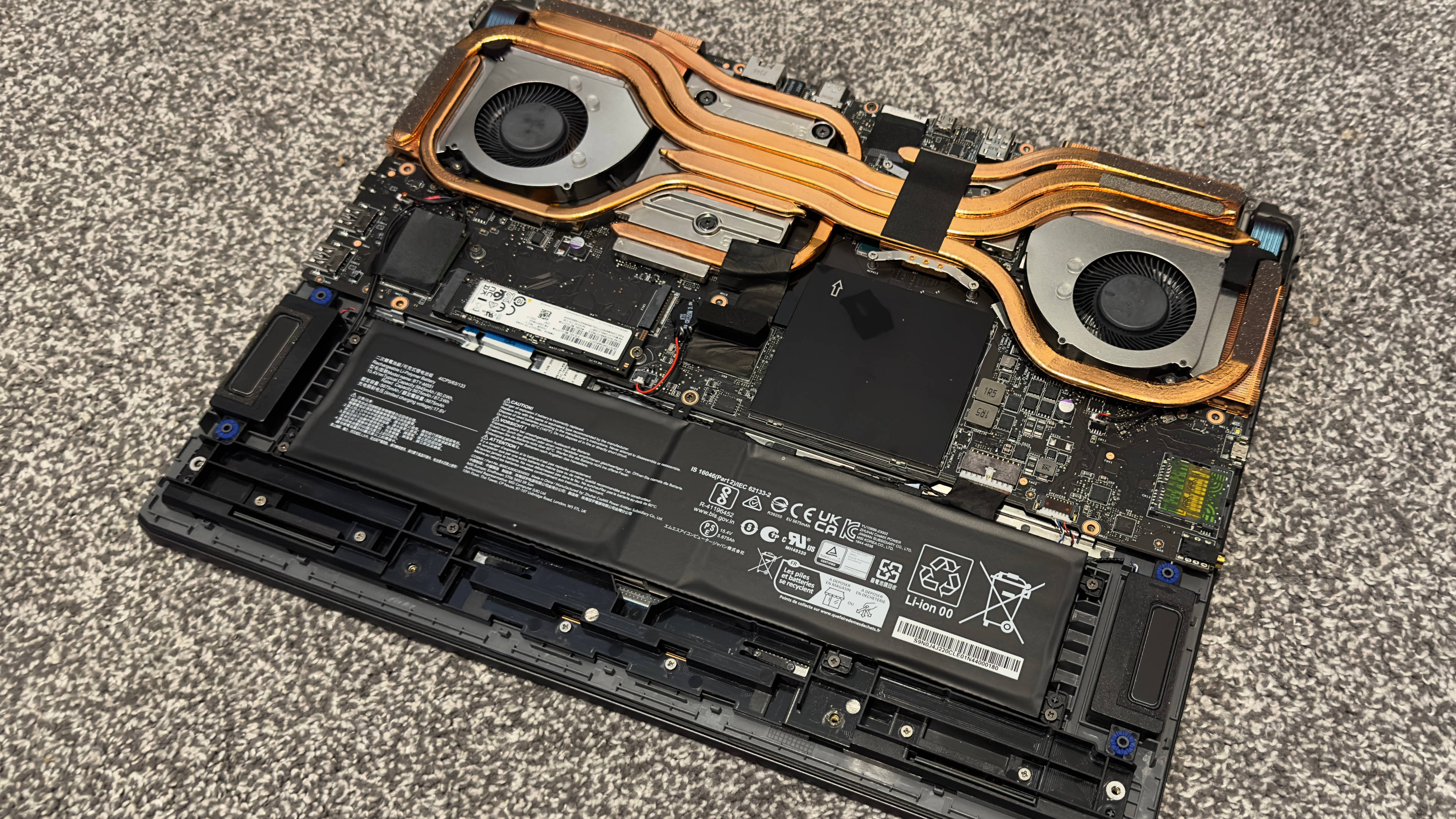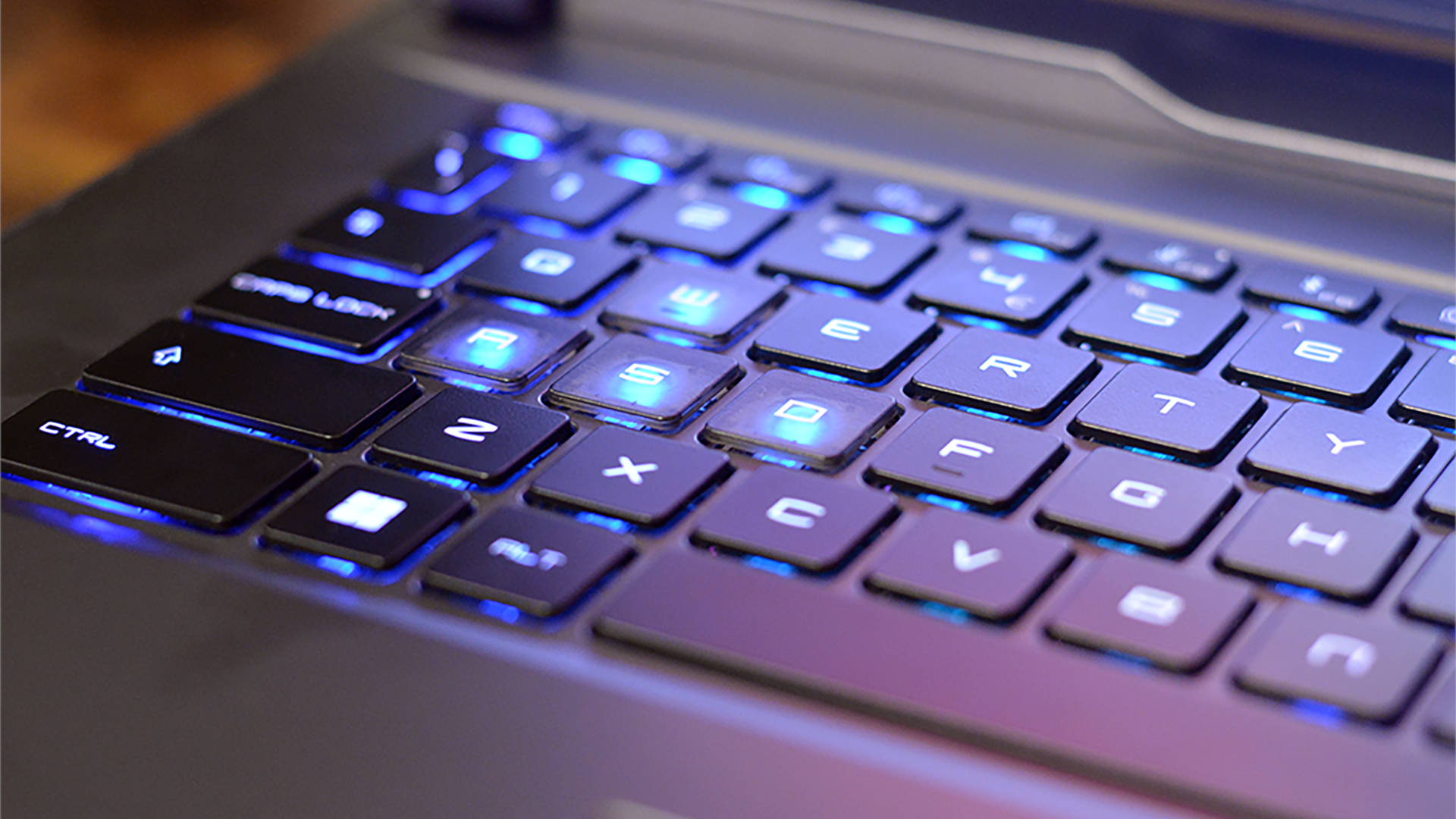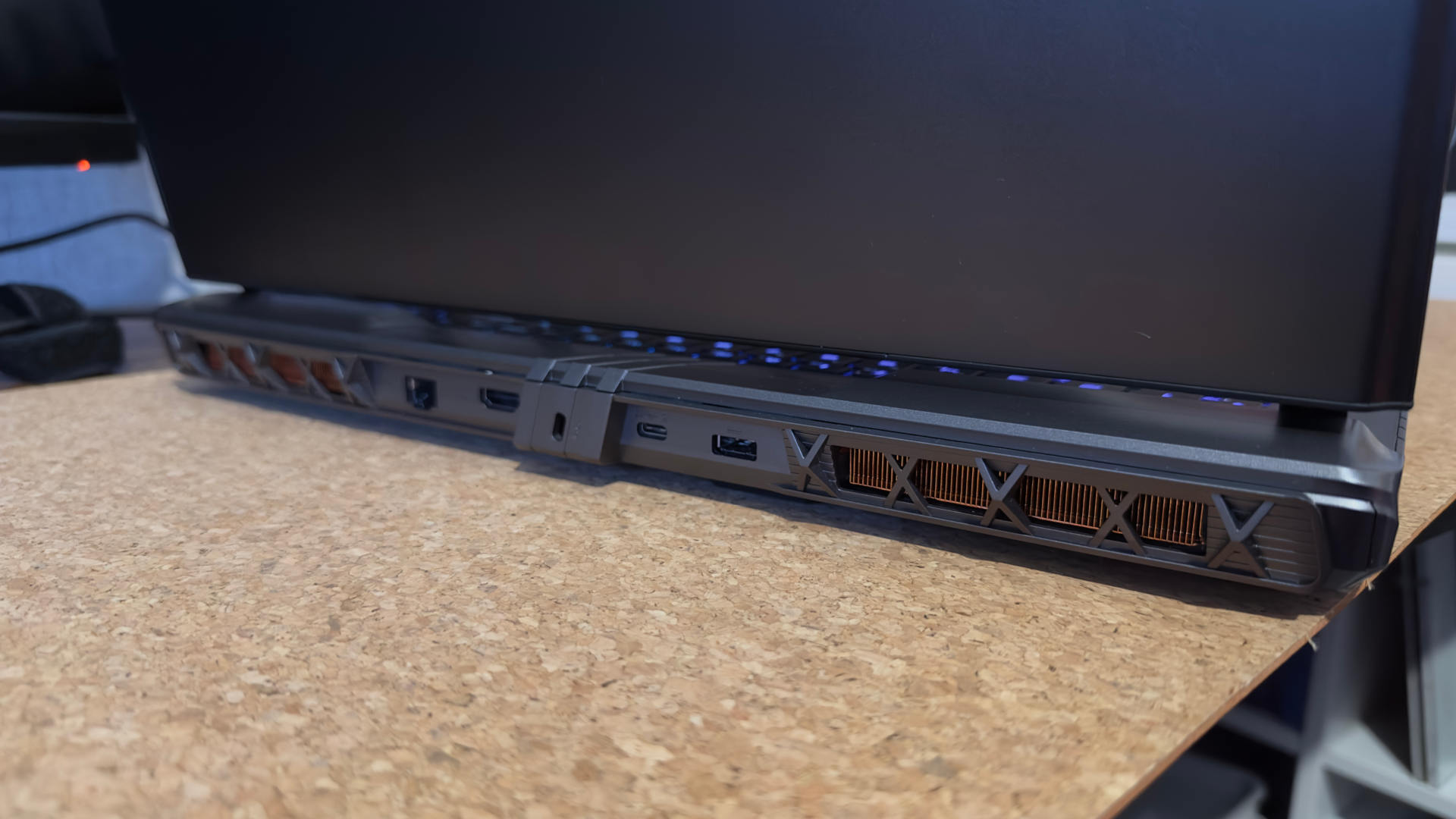
At face value there's not an awful lot of difference between this Vector 17 HX laptop and its predecessor, the Vector GP68 HX. The chassis is the same, as is the 17-inch 2560 x 1600 IPS 240 Hz screen. Both can be configured with up to an Intel Core i9 CPU and an Nvidia RTX 4080 GPU. Even the keyboard, ports, and battery have all been re-used.
But what is new lies at the very heart of the Vector 17's strength and weakness: Intel's 14th Gen Core processor. In this A14VGG variant, we have a Core i9 14900HX, the most powerful Raptor Lake Refresh chip you can jam into a laptop. It's essentially an Intel Core i9 14900K but with lower power limits.
Where the desktop version has base and max Turbo power limits of 125 and 253 W, respectively, the laptop-ified chip is capped at 55 and 157 W. To comply with these limits, the peak and base clock speeds are all a lot lower, but the rest is unchanged: You're still getting eight P-cores, 16 E-cores, and 32 threads in total.
It's an immensely capable CPU but all that performance creates a wee problem and it's heat. I'm getting ahead of myself, though, so we'll come back to this issue shortly.
Handling the graphics duties is an RTX 4070, with 4,608 shaders, a boost clock of 2,175 MHz, and 8GB of VRAM. Nvidia's laptop GPUs can be configured across a range of power limits (35 to 115 W) but MSI has set the maximum value for this model to 140 W.
However, the GPU clock speed and subsequent performance you see in games is ultimately limited by the fact that MSI has capped the combination CPU+GPU to 215 W. So if you wanted to have the RTX 4070 running at full power, you'd only have 75 W left over for the CPU.
This limit is 20 W greater than in the previous Vector GP68 HX model, which is certainly great news for gaming, but given that MSI hasn't changed any other aspect of the laptop, especially in terms of cooling, the extra power just means extra heat.
Not that this is a unique problem to the Vector 17 HX, as most gaming laptops have to juggle performance and power, but just turning the wick up to eek out a few more frames per second than the competition perhaps isn't the best solution.




But let's forget about that for the moment and just dive into the gaming benchmarks. We haven't had many RTX 4070 laptops in for review, so a few of the comparisons are a bit mixed, but I've included one RTX 4080 laptop just so you can see how much of a difference that GPU makes.
While the MSI Vector 17 HX doesn't always take the lead against the other RTX 4070 laptops in terms of average performance, it barnstorms the others when it comes to minimum or 1% low figures. That's probably down to the 14900HX processor, though the 32GB of DDR5-5600 helps in no small way; it could also be a case that the Vector simply has a higher CPU+GPU combined power limit.
It doesn't matter how it ultimately achieves it, the result is all that matters and the gaming performance is more than good enough.
The result for the 3DMark Storage test might look a little disappointing but in actual use, games load very quickly and the laptop itself goes from off to Windows in a handle of seconds. To say it boots quickly is a bit of an understatement.
There's space inside for a second SSD and MSI's spec sheet says that one of these is a PCIe Gen 5 socket. However, there's no obvious label on the motherboard to indicate which one it is. I'm a little surprised that both M.2 sockets aren't Gen 5; there are sufficient PCIe lanes for it from the CPU because the RTX 4070 only uses eight out of the 20 available.

Despite the best frame rates being achieved at 1080p, I'm not sure how many people would want to spend north of two thousand notes to play at that resolution. Fortunately, gaming at native 1600p isn't that much slower than it is at 1440p, and it looks super crisp and smooth.
The 240 Hz IPS panel really is glorious to look at: Bright and rich in colour, with surprisingly decent blacks, and games are especially snappy. Its 16:10 aspect ratio is much nicer than 16:9 for productivity and content creation and it feels bigger than 17 inches, despite its slightly chubby bezels.
However, even with its sparkling output, there's no support for HDR nor variable refresh rate (VRR), which in this day and age of gaming is a bit puzzling. I'd happily take a lower refresh rate to have these features.
If that's a concern, at least there are several additional outputs on offer: 20Gbps USB Type-C and 40Gbps Thunderbolt 4 Type-C ports for DisplayPort monitors, and a HDMI 2.1 socket that's good for 4K, 120 Hz. Not that you'll enjoy a decent performance at that resolution with an RTX 4070 laptop chip.
Although this is very much a gaming laptop, there's lots of CPU horsepower underneath the keyboard, making it ideal for content creation. It's interesting to see how much difference there is between the laptops tested, when the 14900HX and 13900HX are virtually identical bar a relatively small gap in peak clock speeds.
What we're seeing here is how well each model prevents the CPU from bouncing off its thermal limit and in the case of the MSI Vector 17 HX, it's not doing a good enough job compared to the Lenovo Legion Pro 7i.
It's far better than the Acer Predator Helios 16, mind, and this is backed up by the CPU temperature recorded during the Metro Exodus benchmarks. All of the Intel-powered laptops clatter off their thermal limits, but that poor Acer just barges right through it.
Interestingly, the MSI Vector's RTX 4070 runs relatively cool, despite demanding more power than any of the other laptops during the test runs. The clocks boost to well past the standard Nvidia level of 2,175 MHz and yet it doesn't result in the GPU boiling itself to pieces.
Some of that is down to the fact the chip is small and very energy efficient, but credit does need to be given to MSI for giving it a decent amount of cooling. If you look at it below, the GPU (middle-left) lies underneath the pile of heat pipes and a large heat spreader.
The 14900HX (middle-right) is treated to somewhat of a lesser affair, sharing heatpipes with the GPU. It's no wonder the CPU gets so hot, when there's such a small amount of mass to absorb the heat.

I've mentioned temperatures and heat quite a lot so far but haven't addressed it fully, so let's do that now. In short, it's a problem, a big problem for the Intel processor, and as we've seen above, MSI hasn't done much to combat it in any kind of a sensible way, especially compared to what's being used for the GPU.
At least the Vector 17 HX comes blessedly free of the usual amount of bloatware you typically get in a laptop and the only proprietary app is the MSI Center. Here you can keep an eye on various parameters, as well as tweak some of them. The most important of which is the User Scenarios tab.
These determine how much power the CPU and GPU are permitted to draw and it sets the overall fan speeds. All of the gaming benchmarks were done using the Extreme Performance profile, as we typically do to show the laptop at its best, and while it results in the highest frame rates, the fan noise is so loud and uncomfortable that it's genuinely not worth using.
To examine the scenarios further, I ran two sets of in-game test runs, using Starfield and Cyberpunk 2077 at 1600p, with DLSS set to Balanced. Each run consisted of ten minutes of gameplay, with the overall performance and power consumption recorded.
I have no idea what level of AI the MSI AI Engine profile actually uses but it makes no difference to anything: It's just as bad as the Extreme Performance setting. Only on Balanced do things become tolerable, but even then, the fans are very loud. At least the overall pitch is a tad lower and not quite as shrill.
At one point I thought I was just being overly sensitive to it all, so I ran the tests again but this time with a cheap sound level meter, positioned 15 cm off the left side of the laptop. The Extreme Performance and MSI AI Engine settings resulted in levels of 65 dB, with the ambient noise being 36 dB. The Balanced mode was better, at 60 dB, but still overly loud.
Silent and Super Battery modes were 47 and 45 dB respectively and blessed relief on the ears, but they both seriously cap the power limits of the CPU and GPU. Not surprisingly, it has a significant effect on game performance. Silent mode was just about okay, but Super Battery is nearly useless for gaming.
You might think the results in Cyberpunk 2077 don't look too bad with that setting, compared to Silent mode, but the game was decidedly sluggish. The 1% low figures don't properly show this because it wasn't stuttering, just odd, like wading through treacle.

And don't think that this is just one old man whining about noise. The other gamer in my house donned her active noise-cancelling headphones to play her favourite indie games on the Vector 17 HX but she also still felt it was too noisy, when set to Balanced mode or higher. If ANC can't deal with the fans, what can?
Oh, and while the battery life benchmark is roughly par for this kind of laptop, I found it was far lower than this when testing more demanding games. For example, just 15 minutes of Starfield sucked up 40% of the battery's charge. I know this is really a desktop replacement and it nearly always going to be plugged in, but not getting an hour of gameplay is pretty rubbish.
The MSI Vector 17 HX has the usual gamut of ports and connectivity, and they all worked as expected. However, the Wi-Fi 6E module was surprisingly weak, getting around half the download rate achieved on other devices in my office. No amount of positioning or tweaking with the settings improved the data speed.
✅ You're feeling the need for speed: While not sporting the most powerful GPU you can get in a laptop, the gaming performance is really top-notch.
✅ You do a lot of content creation: That mighty 14900HX, bags of RAM, and fast storage are ideal for 3D rendering, video editing, and game development.
❌ You don't like fan noise: Even on balanced settings, the fans are loud and unpleasant to work or game with.
❌ You like a comfy gaming environment: 215 W of max power makes the keyboard a tad hot, especially around the usual gaming keys.
❌ You want VRR support: This is a 2024 gaming laptop. The screen should have a variable refresh rate. Period.
And then there's the keyboard. It may well be designed by SteelSeries and have nice RGB effects, but I found the key feedback to be dull and rather unpleasant to do lots of typing on. Keyboard feel is very subjective, though, and it may well be your cup of tea.
What's far less subjective is the fact that the RGB goodies bailed out after a week of use. It was still technically working but whatever was going on with the SteelSeries software, it steadfastly refused to have anything more than a handful of keys showing any colours.
It also tended to get somewhat hot, especially after gaming for a while. While this is to be expected in a laptop, most of that heat was centred around the WASD area, due to the positioning of the CPU. It never got unusably hot but it didn't help my already falling opinion of the keyboard.
At least there are enough USB ports to attach a nice gaming keyboard and mouse, to circumnavigate this problem entirely.
After spending several weeks of gaming and working on the MSI Vector 17 HX, I've been left with several impressions. The first of which concerns the 14900HX which is the last hurrah for Intel's monolithic chip design. Its new Core Ultra range of processors, based on the Meteor Lake architecture, are tiled in nature and Intel's next series of gaming processors will follow suit.
Whether it will be any better than Raptor Lake Refresh with regards to power consumption and heat is anyone's guess right now, but I do hope it is. The 14900HX is ridiculously potent but it's simply too much for this laptop's chassis and cooling system. If I had to buy a Vector 17, I'd certainly be looking for one with an i7 or even an i5 CPU.

I would be more than happy with an RTX 4070 version, though. The performance of that little chip is really quite something, though you'll want to make sure that it's given plenty of power to stretch its little legs. More power means more heat, and that brings us to the most lasting of impressions.
Put simply, I'm not convinced that MSI's coolers are even remotely suitable for a high-powered combination of Intel and Nvidia chips. The chassis size forces the layout to rely heavily on two small fans blasting air through the heatsinks but as they're not particularly beefy, the fan speeds need to be excessively high to get any decent cooling.
I started this review about face value and the Vector 17 HX's face screams wasted potential. There's a brilliant laptop, albeit somewhat pricey, just begging to be set free and gamed on here, but the awful fan noise ruins it. This seems to be a common issue with gaming laptops at the moment, but it's something we shouldn't accept.
The limitations of the screen and the recalcitrant keyboard: I could easily live with those, but the ridiculous, screaming fan noise while gaming? Absolutely not.
Let's hope MSI's engineers are planning something better.








